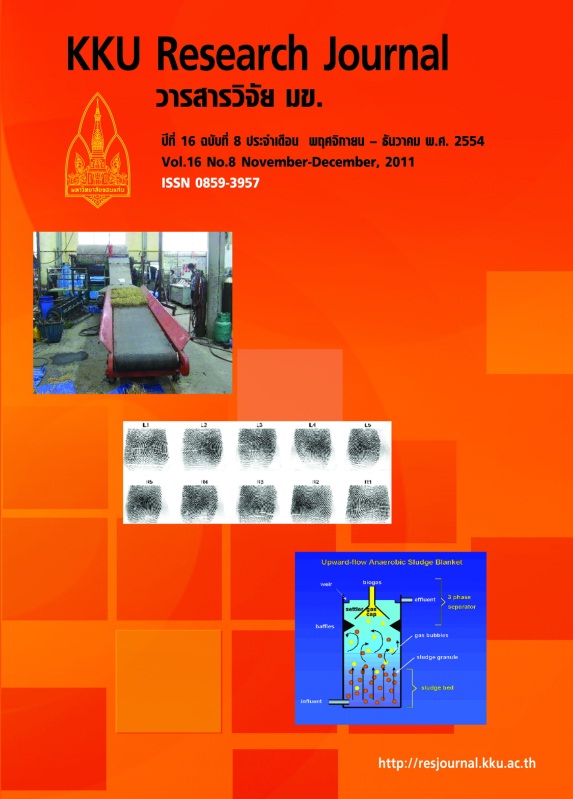Comparison of rates for expansion of surface and subsurface sinkholes: a case study at Ban Bo Deang Amphoe Ban Muang Changwat Sakon Nakhon
Main Article Content
Abstract
The present study was aimed to measure the rate of expansion of surface and subsurface sinkholes which were formed as the result dissolution of near surface rock salt body or salt dome. Sinkholes’ diameters were repeatedly measured and a series of photographs were taken between 2001 and 2011. The measurements of 2-D apparent resistivity profiles of near surface sinkhole’s expansion were repeated 10 times between 2002 and 2011; December 2002, March, 2003, November 2003, February 2004, May 2004, February 2005, February 2006, February 2006, February 2007, February 2010, and February 2011. Every time the apparent resistivities were collected, the expansion of sinkhole’s diameter at surface was measured. Data from those ten measurements together with the expansion of sinkholes’ diameters indicated that a resistivity survey can indeed detect subsurface deformation that occurs through time. Subsurface resistivity images have revealed a body of low resistivity zone that can be interpreted as a subsurface cavity. Further, the presence of a blow shape can be identified and measured as evidence of rock salt incised. The subsurface resistivity images obtained between 2002 and 2004 revealed a minimum depth to rock salt to be about 44 meter below the surface, whereas the data obtained in 2011 revealed a minimum depth to rock salt to be 50 meter below the surface. Rate of expansion in subsurface cavity was clearly evident after 2004 and onwards, reflected by an increase in the length from a series of a blow shape. A rate of sinkhole expansion follows an equation of 0.406x month +4.44 meters (R2 = 0.976). A rate of subsurface cavity expansion follows an equation of 0.532 x month + 93.14 meters (R2 = 0.967). The rate of expansion of subsurface sinkhole was approximately 1.3 times (0.532/0.406) greater than that of a surface sinkhole.


